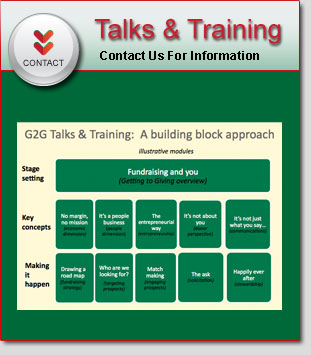Here are some more interesting questions fielded by Howard, at a recent virtual learning session. (See last month’s blog, for the first installment.)
1. What is the most common mistake that business people make when taking nonprofit leadership roles?
Howard: I see what I call Type 1 and Type 2 errors. Type 1 errors stem from the belief that the public sector is exactly like business, so you just need to apply standard business approaches. Type 2 errors come from the belief that “I should leave my business head at home.”
There are differences, but the nature and degree will vary, depending on the nonprofit in question.
One common Type 1 error is around employee motivation. The private sector has tools that nonprofits do not, such as incentive payments. The public sector traditionally attracts people interested in serving a cause they believe in, even if the job pays less. That’s no excuse, though, for not having high standards, and offering market rates for top talent.
A common Type 2 error is a failure to ask tough questions about the economics of – yes – the business. If you happen to be on the board, it’s more than a matter of wanting to do the best for the organization; you may be liable for (or, at the very least, embarrassed about) financial oversights or missteps.
All too often, management will engage in financial brinksmanship; overspending and then making a desperate plea to board members for more money. In an investing situation, the response likely would be: “If it ain’t working, I’m not putting more money into it.” That’s harder to do in the context of a nonprofit board, where members often prefer to try to sneak off a sinking ship.
2. When making a presentation, is it better to focus on data, or photos and stories that elicit an emotional response?
Howard: Another great question… with no simple, either/or answer!
Well, actually, the simple answer is: it depends on the person. If you’re preparing for a meeting with someone you don’t know very well, ask their friends: “What will appeal to her?” One thing to remember, by the way, is that you can put a lot of factual information in written form. Use your face-to-face time for the more personal side of the appeal.
At Harvard Business School, we traditionally appealed to the head. Business people like numbers and facts, we figured. But, before our first capital campaign, we did some communications research that showed that we had to appeal more to the heart. We also were aiming to engage alumni’s spouses, who might or might not be business types.
Now, that doesn’t mean more photos of good looking students on manicured lawns of imposing brick buildings with lovely white pillars. (Don’t all those educational brochures start looking the same?) We wanted to highlight the impact of HBS students and alumni in the world.
We developed a multimedia presentation featuring a series of personal stories told by people whose lives had been changed through initiatives supported by the HBS community. They included a young woman suffering from a rare disease whose condition had been relieved by brain implants, in part due to the efforts on an HBS alumnus who previously had been trained in neurosurgery.
Not a dry eye in the house, after that one. It was a powerful start to what became a very successful capital campaign.
3. What is the role of social media for communicating mission and asking for money?
Howard: I’m over 60, and probably not the best person to answer this question. (I actually sometimes think that Facebook is a Chinese plot to destroy U.S. productivity.) Instead, here’s a response from Jereann Shafir Zann of Icon Design & Consulting, G2G’s much-appreciated resource for all things technology.
Jereann: There certainly is a growing role for social media for non-profits. It can be a very valuable tool for communicating mission, message and engaging your community. A lot of non-profits are exploring ways to utilize social media as a fundraising tool.
That said, it really depends on what your fundraising strategy is. Social media can certainly get you small gifts, and engage new small donors, but it won’t matter much for your large donors, whose decision will not be influenced by the “likes” you have on Facebook.
Whether you pursue social media as a tool for fundraising or raising awareness of your organization or message, the key is to focus on your audience.
Start by asking within your organization “Who do we want to reach through social media?” Follow that with “Who are we reaching?” Then, outline what you hope to accomplish, and move forward with a strategy from there.
Remember that social media doesn’t take the place of more traditional means to fundraise or communicate your mission; it is simply another tool on your belt.



